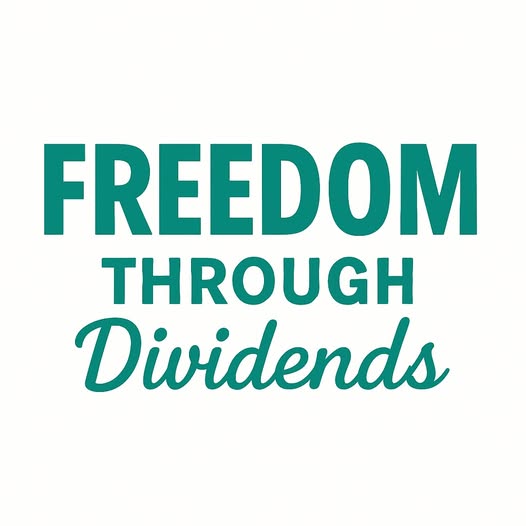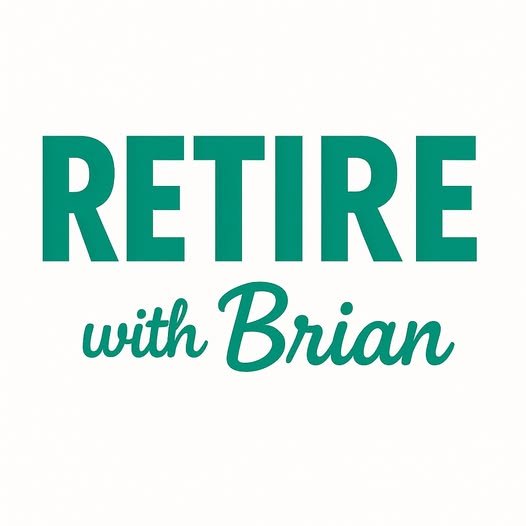Are you looking to maximize your investment returns without too much risk? The financial markets are always changing. Investors are searching for ways to reach their financial goals.
High-yield ETF investing is a popular choice for growing your portfolio. It focuses on yield-maximizing exchange-traded funds. This can lead to higher returns than traditional investments.
This article will dive into the benefits of high-yield ETF investing. It will also show how to add this strategy to your portfolio. This can help you meet your financial goals.
Key Takeaways
- Understand the concept of high-yield ETF investing and its potential benefits.
- Learn how to maximize investment returns using yield-maximizing ETFs.
- Discover strategies for effectively incorporating high-yield ETFs into your portfolio.
- Explore the advantages of high-yield ETF investing for long-term financial growth.
- Gain insights into managing risk while pursuing higher returns with ETFs.
Understanding the Power of High-Yield ETFs
High-yield ETFs are a smart way to earn passive income with ETFs. They offer higher returns than regular ETFs. This makes them great for those wanting to grow their wealth.
What Are High-Yield ETFs?
High-yield ETFs are special funds that aim for higher returns. They invest in things like dividend stocks and high-yield bonds.
Structure and Composition
These funds track a specific index or sector. They have a mix of high-yielding securities. This mix helps spread out risk and aims for steady returns.
Benefits of ETF Investing
Investing in ETFs has many perks. It’s flexible, diversified, and cost-effective. High-yield ETFs focus on making more income.
| ETF Type | Typical Yield | Investment Focus |
|---|---|---|
| Dividend ETFs | 4-6% | Dividend-paying stocks |
| High-Yield Bond ETFs | 6-8% | High-yield corporate bonds |
| REIT ETFs | 3-5% | Real estate investment trusts |
How They Differ from Standard ETFs
High-yield ETFs focus on assets that give higher returns. This is key for those looking to increase their income.
The Compounding Effect of High Yields
The real strength of high-yield ETFs is in compounding returns. By reinvesting dividends or interest, you can grow your wealth over time.
Building Wealth with Yield-Maximizing ETFs: The Fundamentals
To boost your investment returns, it’s key to grasp the basics of yield-maximizing ETFs. These funds aim to increase income through dividends, interest, or other distributions. They’re great for those looking to grow their wealth.
The Wealth-Building Potential of ETFs
ETFs, or Exchange-Traded Funds, offer a mix of assets like stocks, bonds, or real estate. This mix can lower risk and up potential returns, making ETFs a strong tool for building wealth. By combining resources, investors get to tap into a wide market segment. This spreads risk and could boost returns.
Balancing Growth and Income
When investing in yield-maximizing ETFs, it’s vital to balance growth and income. While aiming for high yield, it’s crucial to ensure the investment can also grow in value. This balance is achieved by diversifying across different asset classes and sectors.
Time Horizon Considerations
Your investment time frame is key to your strategy. Knowing if you’re investing for the short or long term guides your ETF choices.
Short-Term vs. Long-Term Strategies
Short-term plans focus on quick access and lower risk. Long-term strategies, however, may take on more risk for higher returns. Yield-maximizing ETFs fit both, based on the assets and your goals.
Adjusting for Life Stages
As you move through life stages, your investment plan may change. Younger investors might focus on growth, while those nearing retirement might seek income. Yield-maximizing ETFs are useful in these strategies.
| Investment Stage | Primary Focus | ETF Strategy |
|---|---|---|
| Early Career | Growth | Aggressive Yield-Maximizing ETFs |
| Pre-Retirement | Income | Conservative Yield-Maximizing ETFs |
| Retirement | Income Preservation | Low-Risk Yield-Maximizing ETFs |
Types of High-Yield ETFs to Consider

The world of high-yield ETFs is vast, covering many asset classes and investment strategies. You’ll find options for various financial goals and risk levels.
Dividend ETFs
Dividend ETFs focus on income from dividend-paying stocks. They let you invest in a mix of companies that pay dividends, offering a steady income.
Dividend Growth ETFs
These ETFs pick companies that raise their dividend payouts over time. They’re great for those wanting income and growth.
High-Dividend Yield ETFs
High-Dividend Yield ETFs aim for stocks with high dividend yields. They’re good for those seeking income, but may carry more risk.
Bond ETFs
Bond ETFs give you access to different bonds, providing income from interest. They help diversify your portfolio and manage risk.
Corporate Bond ETFs
These ETFs invest in corporate bonds, offering yields based on the bond issuer’s creditworthiness.
Municipal Bond ETFs
Municipal Bond ETFs focus on local government and municipality bonds. They often offer tax-exempt income, which is great for those in higher tax brackets.
Real Estate ETFs (REITs)
Real Estate ETFs, based on Real Estate Investment Trusts (REITs), let you invest in real estate without owning properties. They provide a steady income and diversification.
Preferred Stock ETFs
Preferred Stock ETFs invest in preferred stocks, blending stock and bond features. They usually offer higher yields than common stocks and are less volatile, appealing to income-focused investors.
Knowing the different high-yield ETFs can help you make better investment choices. This can improve your returns and help you reach your financial goals.
Evaluating ETF Performance Metrics
Checking ETF performance metrics is key to picking the best investments. To grow your wealth, you must know the important metrics that affect ETF performance.
Yield Percentage vs. Total Return
When looking at high-yield ETFs, it’s important to know the difference between yield percentage and total return. Yield percentage is the income from the ETF, like dividends or interest. Total return includes yield and any changes in the ETF’s value. For example, an ETF might have a high yield but lose value, affecting its total return.
Expense Ratios and Their Impact
Expense ratios are the annual fees from the ETF provider, shown as a percentage of the fund’s assets. A lower expense ratio means more money in your pocket over time. For example, an ETF with a 0.05% expense ratio is cheaper than one with a 0.50% ratio. Always check the expense ratio when looking at ETF performance.
Tracking Historical Performance
Looking at an ETF’s past performance helps you see how it does in different market times. This can show its strength and growth potential. Choose ETFs with a good track record, but remember past results don’t predict the future.
Understanding Risk Metrics
To make smart investment choices, you need to look at risk metrics. Two key ones are standard deviation and beta.
Standard Deviation
Standard deviation shows how much an ETF’s returns vary from its average. A higher standard deviation means more volatility, making it riskier.
Beta and Correlation
Beta shows how much an ETF moves with the market. A beta of 1 means it moves with the market, while a beta over 1 means it’s more volatile. Knowing beta and correlation helps you spread out your investments.
By carefully looking at these metrics, you can make better choices and get the most from your high-yield ETFs.
Creating a Diversified High-Yield ETF Portfolio
A diversified high-yield ETF portfolio is key to building wealth. It spreads investments across different areas. This can lead to better returns and lower risks.
Asset Allocation Strategies
Asset allocation is crucial for a diversified portfolio. It divides investments into different types. This aims for a balance between risk and return.
Conservative vs. Aggressive Allocations
A conservative allocation goes for safer choices like bonds and dividend stocks. They offer steady income. On the other hand, an aggressive allocation seeks higher returns with riskier investments like growth stocks.
Core-Satellite Approach
The core-satellite approach mixes a core of diversified ETFs with specific investments. It balances stability with the chance for higher gains.
Sector Diversification
Sector diversification spreads investments across sectors like tech, healthcare, and finance. It reduces risk from one sector.
Geographic Diversification
Geographic diversification includes ETFs from the U.S., Europe, and emerging markets. It guards against economic downturns in one area.
Balancing High-Yield with Growth ETFs
It’s important to mix high-yield ETFs with growth ETFs. High-yield ones offer income, while growth ones can increase your capital.
Using these strategies, you can build a diversified high-yield ETF portfolio. It meets your wealth goals and risk level.
Top High-Yield ETFs for Income Generation

High-yield ETFs are great for those wanting a steady income. They offer a mix of investments to boost returns while keeping risk low.
Dividend Aristocrat ETFs
Dividend Aristocrat ETFs focus on companies that raise their dividends every year. This makes them a reliable income source.
SPDR S&P Dividend ETF (SDY)
The SPDR S&P Dividend ETF (SDY) tracks the S&P 500 Dividend Aristocrats Index. It includes companies with 20+ years of dividend increases. It’s attractive for those seeking income.
Vanguard Dividend Appreciation ETF (VIG)
The Vanguard Dividend Appreciation ETF (VIG) invests in companies with a history of raising dividends. It balances income and potential growth.
High-Yield Bond ETFs
High-Yield Bond ETFs invest in corporate bonds with higher yields to offset their risk. They’re popular for boosting income.
iShares iBoxx $ High Yield Corporate Bond ETF (HYG)
The iShares iBoxx $ High Yield Corporate Bond ETF (HYG) offers broad exposure to high-yield corporate bonds. It’s for investors ready to take on credit risk for higher yields.
SPDR Bloomberg High Yield Bond ETF (JNK)
The SPDR Bloomberg High Yield Bond ETF (JNK) tracks the Bloomberg U.S. Corporate High-Yield Bond Index. It provides a wide range of high-yield bond exposure.
| ETF | Yield | Expense Ratio |
|---|---|---|
| SDY | 2.5% | 0.35% |
| VIG | 1.8% | 0.08% |
| HYG | 5.5% | 0.49% |
| JNK | 5.3% | 0.40% |
REIT ETFs for Real Estate Exposure
REIT ETFs let investors tap into real estate without owning physical properties. They offer a diversified income stream.
Vanguard Real Estate ETF (VNQ)
The Vanguard Real Estate ETF (VNQ) gives broad exposure to the U.S. REIT market. It offers a stable income through dividend distributions.
Schwab US REIT ETF (SCHH)
The Schwab US REIT ETF (SCHH) tracks the Dow Jones U.S. Real Estate Index. It provides a diversified portfolio of REITs.
“REITs have been a cornerstone of income investing, offering attractive yields and diversification benefits.”
International High-Yield Options
International high-yield ETFs offer income from global dividend-paying stocks. They’re great for investors looking beyond the U.S.
iShares International Select Dividend ETF (IDV)
The iShares International Select Dividend ETF (IDV) focuses on dividend-paying stocks in developed markets outside the U.S. It provides a diversified international income stream.
SPDR S&P International Dividend ETF (DWX)
The SPDR S&P International Dividend ETF (DWX) tracks an index of dividend-paying stocks in developed markets. It offers exposure to international dividend income.
Adding these high-yield ETFs to your portfolio can create a diversified income stream. This helps maximize your investment returns.
Implementing Your High-Yield ETF Strategy
Starting your journey with high-yield ETFs requires some key steps. It’s not just about picking the right ETFs. You need a full plan for your investment portfolio.
Setting Up Your Investment Account
The first thing is to set up the right investment account. Think about what fits your financial goals. This could be a regular brokerage account or a tax-advantaged one like an IRA or 401(k). Make sure your account matches your investment time frame and tax situation for the best results.
Dollar-Cost Averaging vs. Lump Sum Investing
Deciding between dollar-cost averaging and lump sum investing is crucial. Dollar-cost averaging means investing a set amount regularly, no matter the market. It can lessen the impact of market ups and downs. On the other hand, lump sum investing puts a big amount in the market at once. It’s good if you have a lot to invest and the market is doing well.
Reinvestment Strategies
Reinvesting dividends and interest is key to building wealth with yield-maximizing ETFs. There are a few ways to do this:
- Automatic Dividend Reinvestment: Many brokerages offer plans that reinvest dividends and interest for you.
- Strategic Reinvestment: You can also choose to reinvest dividends and interest yourself, directing them to other high-yield investments or rebalancing your portfolio.
Automatic Dividend Reinvestment
Automatic dividend reinvestment is easy and ensures your dividends are always reinvested. This can help your wealth grow over time.
Strategic Reinvestment
Strategic reinvestment lets you make more thoughtful investment choices. You can take advantage of market opportunities or adjust your portfolio based on market changes.
Monitoring and Rebalancing Your Portfolio
Keeping an eye on your high-yield ETF portfolio is vital. Rebalancing means adjusting your portfolio’s mix to keep your risk level and investment goals in line. This helps you stay focused on your financial goals.
By following these steps, you can effectively build wealth with yield-maximizing ETFs and reach your long-term financial goals.
Tax Considerations for High-Yield ETF Investing
The tax efficiency of high-yield ETFs is key to your investment’s success. It helps you build wealth by spreading your investments.
Tax Efficiency of ETFs
ETFs are known for being tax-efficient. They pass through taxes and aim to reduce capital gains. This is great for high-yield ETFs, as it lowers your tax bill.
Qualified vs. Non-Qualified Dividends
It’s important to know the difference between qualified and non-qualified dividends. Qualified dividends are taxed less, which is good for investors who care about taxes. High-yield ETFs with qualified dividends offer a better tax situation.
Strategic Account Placement
Where you put your high-yield ETFs matters a lot for your after-tax gains.
Taxable vs. Tax-Advantaged Accounts
Put tax-inefficient investments in tax-advantaged accounts like IRAs or 401(k)s. This way, you pay less in taxes. On the other hand, put tax-efficient investments in taxable accounts to get more after-tax money.
Tax-Loss Harvesting Opportunities
Tax-loss harvesting means selling losing investments to offset gains. This can be very helpful in a high-yield ETF portfolio. It helps reduce taxes and increase your returns.
By understanding and using these tax tips, you can make the most of your high-yield ETFs. This will help you reach your wealth goals.
Common Mistakes to Avoid in High-Yield ETF Investing
To grow your wealth with high-yield ETFs, knowing common mistakes is key. These ETFs can help you earn income, but pitfalls can harm your goals.
Chasing Yield Without Considering Risk
Many investors focus too much on high returns and ignore risk. High-yield ETFs may offer good returns but can be risky. Always check the risks before investing.
Ignoring Expense Ratios
Expense ratios matter a lot. High fees can cut into your earnings. Pick ETFs with low fees to keep more of your money.
Overlooking Liquidity Concerns
Liquidity is key in ETF investing. Some high-yield ETFs may be hard to trade quickly. Know the liquidity of your ETFs to avoid trading issues.
Failing to Rebalance Regularly
Rebalancing your portfolio is crucial. Not doing so can lead to too much risk in some areas. Regularly check your portfolio to keep it on track.
Neglecting to Adjust Strategy as Markets Change
Markets change fast, affecting your ETFs. It’s important to keep up and adjust your strategy. This might mean changing your investments based on new market trends.
Avoiding these mistakes can help you succeed in ETF investing. Building wealth with these funds needs careful planning and knowledge.
- Assess the risk associated with high-yield ETFs.
- Monitor and manage expense ratios.
- Consider the liquidity of your ETFs.
- Rebalance your portfolio regularly.
- Adjust your strategy according to market changes.
Conclusion: Maximizing Your Wealth-Building Journey with ETFs
Exploring high-yield ETF investing shows that a diverse portfolio is key for long-term success. Mixing dividend, bond, and real estate ETFs helps build wealth. This strategy brings in passive income.
Building wealth means choosing the right mix of investments. It’s about spreading out your assets across different sectors and regions. This balance helps you earn more while taking less risk.
To grow your wealth, keep a close eye on your portfolio. Regularly check and adjust it to match your financial goals. This way, you’re on track to a stable passive income and financial success.
FAQ
What are the benefits of using high-yield ETFs for wealth building?
High-yield ETFs offer a mix of investments, potentially higher returns, and regular income. They are great for growing wealth and earning passive income.
How do I choose the right high-yield ETF for my investment goals?
To pick the right high-yield ETF, think about your goals, how much risk you can take, and when you plan to cash out. Look at the ETF’s assets, yield, fees, and past performance. Make sure it fits your strategy for making the most money.
What is the difference between dividend ETFs and high-yield bond ETFs?
Dividend ETFs buy stocks that pay dividends, offering regular income and growth. High-yield bond ETFs invest in riskier corporate bonds for higher yields.
How can I minimize taxes on my high-yield ETF investments?
To cut taxes, use tax-efficient ETFs in regular accounts and tax-inefficient ones in tax-advantaged ones. Know the tax differences between qualified and non-qualified dividends. Also, use tax-loss harvesting to reduce taxes.
What are some common mistakes to avoid when investing in high-yield ETFs?
Don’t chase high yields without checking the risk. Ignore high fees and liquidity issues. Regularly rebalance and adjust your strategy as the market changes. A diverse portfolio and regular checks can help avoid these mistakes.
How do I create a diversified high-yield ETF portfolio?
To diversify, use strategies like conservative vs. aggressive allocations and the core-satellite approach. Spread investments across sectors and regions. Mix high-yield ETFs with growth ETFs for a strong wealth-building plan.
What is dollar-cost averaging, and how can it be applied to high-yield ETF investing?
Dollar-cost averaging means investing a set amount regularly, no matter the market. It helps smooth out market ups and downs, making investing more steady and disciplined.

